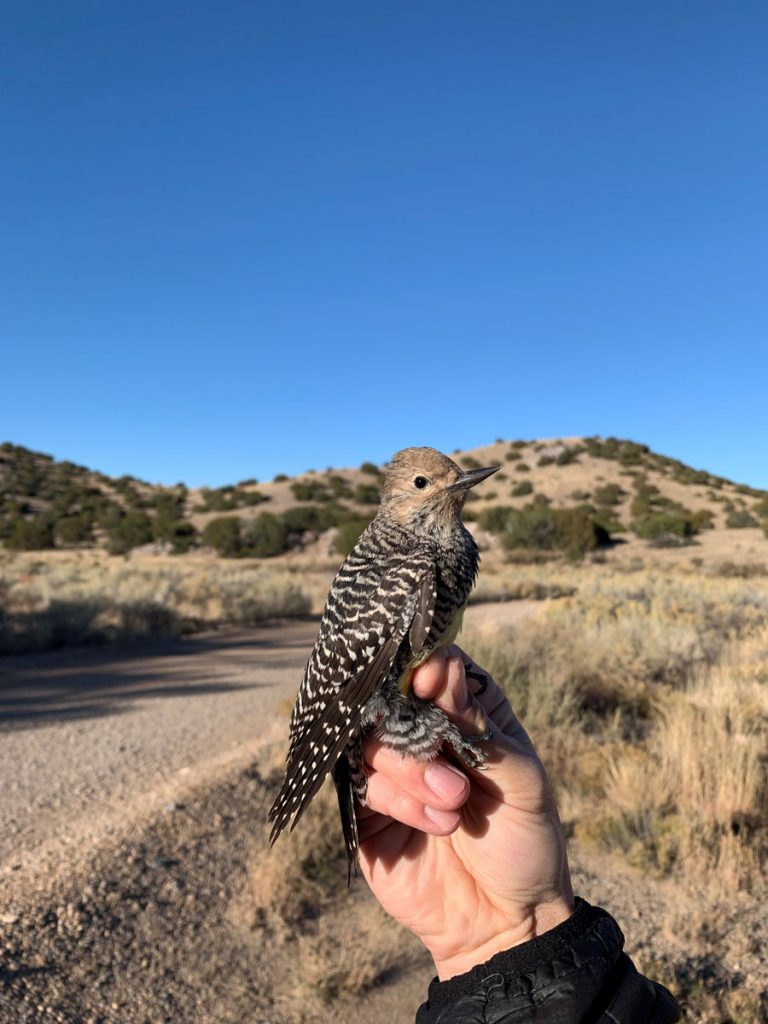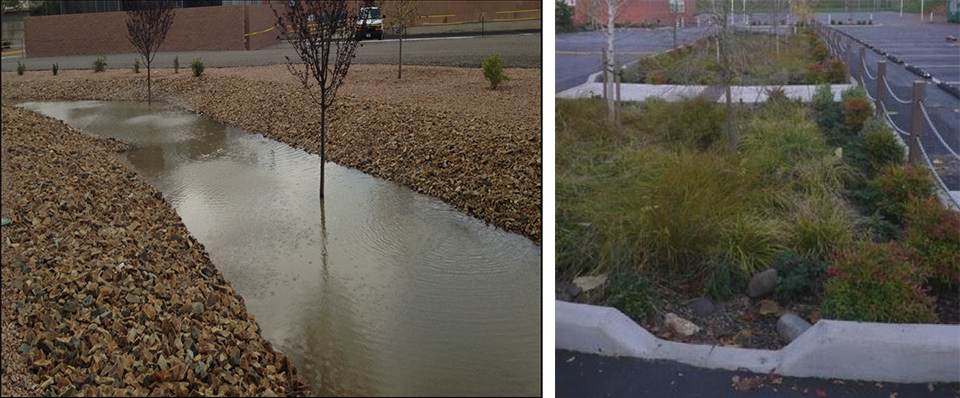Investing in the planet through site sustainability

Sandia has provided the nation with important environmental and climate-related technical innovation for more than 50 years. In honor of Earth Day today, Sandia is celebrating all the ways it has invested — and continues to invest — in the planet through scientific mission and efforts to advance climate security.
From atmospheric testing and modeling to clean energy research and development, Sandia has developed capabilities that can help mitigate emissions, adapt to life in a changing climate, build awareness of what is happening and understand potential interventions. For example, Sandia has managed DOE sites on the North Slope of Alaska for 20 years, contributing rigorous measurement data to help inform and improve climate and weather modeling for global and U.S. science and security missions.
This work is critically important as scientists emphasize that the time to act is now to limit the worst consequences of climate change. Sandia is positioned to address this global challenge because of the Labs’ national security expertise, systems engineering strength and breath and diversity of programs.
In addition to advancing state-of-the-art research and development, Sandia is committed to modeling the way forward in site sustainability. In this issue, the Lab News highlights some of the efforts to reduce Sandia’s carbon footprint and build a more sustainable organization.
A walk on the wild side
Tales of wild animals exploring empty streets and other once-crowded places during the COVID-19 pandemic enthralled many, but for Sandia biologist Evan Fahy, it’s an everyday job to remind people that we share spaces with many nonhuman neighbors.
Evan is part of the five-person team that manages Sandia’s ecology program, which ensures compliance with all laws related to protecting and conserving wildlife. “We are very fortunate to be surrounded by a healthy, functioning ecosystem,” said Evan of Sandia’s Albuquerque site. But such proximity also comes with responsibility, he said.
As on-site employees transition back to campus from working at home, it is important to be aware of the landscape we have at Sandia and the potential for wildlife encounters. Everyone can do their part by disposing of food wrappers and containers and not intentionally feeding wildlife.
In an on-site encounter with a furry, feathery or scaly neighbor, Evan said to give it plenty of room and move to a safe position. Then, submit an Eco-Ticket or call 311 to report the interaction, a step Evan highly encourages. “Even if the wildlife encounter doesn’t require a physical follow-up, we just like to hear what animals are out there and what they are doing for our records.
“We are fortunate and want people to be excited about having wildlife around,” Evan said. “Just enjoy from afar.”
Waste not, want not
Taking out the trash is not just important for protecting wildlife; it is also the focus of Sandia’s Zero Waste by 2025 initiative. Greenhouse gas emissions from the production, transportation, use and disposal of goods accounts for more than 40% of U.S. greenhouse gas emissions, according to the Environmental Protection Agency, and can be significantly reduced by eliminating waste.
Sandia is making serious progress toward its goal: in the last five years, the New Mexico site has reduced its commercial solid waste by 26% while at the same time increasing the amount of waste diverted through recycling and composting to 70%.
In addition to reducing, recycling and composting, staff are encouraged to refuse what they do not need and reuse items by giving them a second life. The Zero Waste team provides many resources for those looking to reduce their waste footprint and encourages staff to submit their ideas for ways to conserve and recover more resources.

Savings from a rainy day
Another important way Sandia protects the local environment is by managing the quality and quantity of stormwater runoff. At Sandia’s Albuquerque site, about 50 million gallons of stormwater flows each year to the Tijeras Arroyo, which then feeds into the Rio Grande, a major source of water for drinking, agriculture and wildlife.
Sandia’s stormwater program lead John Kay said it is important for Sandia to engage in good housekeeping practices, such as preventing spills, to prevent possible pollutants from coming into contact with precipitation and runoff in the first place.
Sandia uses green stormwater infrastructure and low-impact development designs to preserve existing hydrologic conditions, as well as to capture rainwater for on-site irrigation and groundwater recharge. These structures include detention basins, curb cuts, rain gardens and rooftop harvesting.
“Using stormwater on-site accomplishes numerous objectives simultaneously,” said John. “It allows us to stay in compliance with federal and state regulations, protect the environment, reduce the use of potable water, lower costs and enhance resilience against the impacts of climate change.”
Positive energy
In addition to managing stormwater, site sustainability also means reducing the amount of energy and water used by Sandia facilities. Robin Jones, building system engineering manager at Sandia, leads a team that looks closely at how the Labs can invest to meet new and emerging federal requirements for net-zero emissions, net-zero energy and energy resilience.
“These different but overlapping goals will require major shifts in how we build, power and run our facilities,” said Robin. “We’ve already made great progress in reducing our emissions and see this as an opportunity to think of Sandia’s sites as a living laboratory for how to achieve and scale the technologies needed to achieve our nation’s net-zero goals.”
Part of that progress can be attributed to Sandia’s Reinvestment of Utility Savings Program. Through this program, Sandia uses cost avoidance from renegotiated utility rates and reinvests the savings into energy projects. In 2023, Sandia will be able to reinvest about $2.3 million a year in projects such as installing LED lighting and occupancy sensors, upgrading building controls and improving metering to understand how and when both energy and water are used.
New buildings and renovation projects also must meet high sustainability standards. In addition to following the Guiding Principles for Sustainable Federal Buildings, Robin and her team are implementing the Smart Labs process to improve safety, efficiency and sustainability at Sandia. “Not only will we be able to provide safe and controlled workspaces to support our missions, but we will build sustainability into the design from the beginning.”
Driving down emissions
To achieve net-zero emissions, Sandia must also tackle indirect sources related to our operations, such as investments, purchased goods and services, and business travel. The Commuter Assistance Program tackles another source that falls within this category: emissions related to employees traveling to and from Sandia sites.
“Sandia has an average of 7,500 daily commuters and most are using single occupancy vehicles,” said Ben Henning, commuter assistance program lead. “We want to help connect members of the workforce to other options that produce less emissions.”
Almost 40% of employees have created a commuter profile, which allows users to learn more about and compare the emissions related to different commuting options, such as carpooling or bike riding. Better awareness of the options and their relative impacts is often the first step in changing people’s behaviors, Ben said.
“The commuter profile gives people the power to understand their role in generating greenhouse gases and possibilities for action,” said Ben. “Additionally, it has greatly improved the accuracy of our data related to this source, which can help us further improve the solutions we provide in the future.”
One such solution for lowering emissions that Sandia commuters might consider is using a partial- or full-electric vehicle. EV drivers can join a program that allows them to charge their vehicle on-site at select locations for a membership fee of $10 a month.
Whether they drive EVs or not, Ben encourages employees to reach out to the Commuter Assistance Program to provide feedback. “We’re always open to new ideas for how we can better serve the community and lower our impact on the planet.”